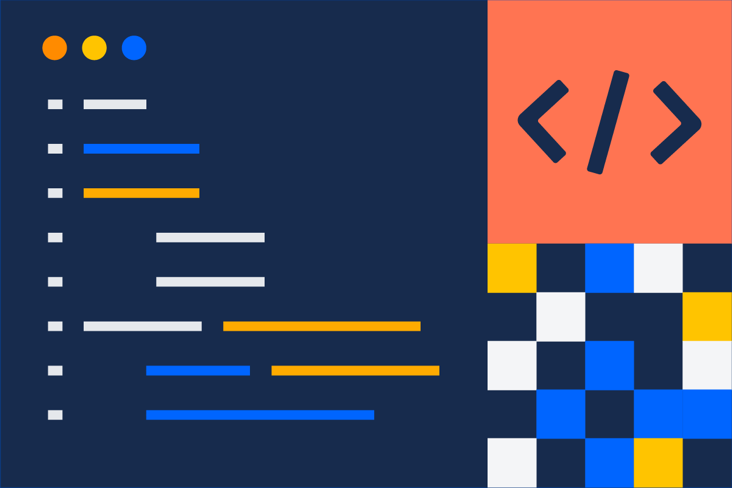What is Docker? A guide to containerization
Docker is a tool for quickly building, testing and deploying software. It works by isolating the program in a container environment to assemble the code without risk to the larger application. After testing and fixing any bugs, developers can deploy the code safely and efficiently. Docker has revolutionized the world of software development by simplifying containerization.
This guide covers what Docker is, its uses, and the benefits of containerization. It explores using Docker in various software development scenarios, including microservices, continuous integration, and deployment.
How Docker works
Docker is an open-source technology that can run on Windows, Linux, and macOS. It works by isolating newly built software in its environment. This environment begins as a Docker image—an executable package that determines how to create a container, what software it will use, and how it will run.
After executing the image, Docker creates a container that holds everything needed to run an application. This includes system tools, code libraries, any dependencies, and runtime. Think of the Docker image as the container's source code or the Docker container as the instance of the Docker image.
Docker fosters Agile practices, which involve fast development cycles focused on collaboration, flexibility, and continuously shipping code that works. It enables developers to run tests quickly and ensure everything works before deploying an application to staging and the production environment.
related material
Microservices vs. monolithic architecture
SEE SOLUTION
Manage your components with Compass
What is Docker used for?
Developers use Docker in various ways due to its software development and deployment versatility.
Some use cases of Docker include:
Microservices architecture
One way to answer the question “What is Docker used for?” is about its use in microservices.
Docker is perfect for deploying microservices architecture, which builds a single application by breaking it into a collection of independent, loosely coupled services.
By using Docker containers for building microservices, DevOps teams can test code without fear of negatively impacting the rest of the application. Using Docker increases the speed and efficiency of deploying microservices since it can run separately from the main code base.
Even though adding microservices increases application complexity, tools such as Compass can tame microservice sprawl with a component catalog that collects all the company’s software components into one place.
Compass helps establish best practices and measures the health of software with scorecards. It provides data and insights across the DevOps toolchain using extensions built on the Atlassian Forge platform.
Continuous integration and deployment
Developers can establish continuous integration and continuous delivery (CI/CD) pipelines using Docker in DevOps. This means merging code changes with the project's main branch (continuous integration) while ensuring end users have a working application with up-to-date, reliable software, enabling continuous deployment.
Docker streamlines the CI/CD cycle, allowing developers to hand operations teams an application packaged as an image that runs in any environment.
Containers
Docker containers are standalone units of code and all their dependencies that can run reliably in any environment. Docker allows users to build and deploy applications with packaged content and infrastructure that your IT teams manage and secure.
Before containerization tools, developers had to build their applications on local machines or virtual machines (VMs). They would then manually deploy them to a server environment to test and run.
With Docker, developers can now use simple commands to build, start, or stop containers and their code. This simplifies and streamlines application deployment.
Software testing
Docker offers considerable flexibility and several advantages for software testing, including:
- Consistent testing environments: Docker packages everything the application needs to run in any environment or on any machine, not just the developer’s.
- Test automation: Integrating Docker into existing automation simplifies repetitive tasks.
- Cost reduction: With Docker, there's no need for dedicated hardware or VMs for each test environment.
- Better collaboration: Docker makes it easy to share test environments by simply sharing container images with team members.
Benefits of Docker
The benefits of using Docker for software development and deployment include scalability, consistency, portability, isolation, and resource efficiency. These advantages impact teams across the company, including developers, operations, and quality assurance.
Scalability
Docker containers start up quickly, enabling seamless deployment of applications on demand. This responsiveness allows applications to scale up or down based on fluctuating traffic or increased workloads.
For example, online shoppers could flood an e-commerce shopping app during a Black Friday sale. To handle these surges, Docker containers running the website's microservices can scale automatically using the orchestration tool.
As shopper and transaction numbers increase, the orchestration tool builds new containers to distribute the workload. This ensures the website can perform smoothly despite traffic spikes.
Consistency
Docker ensures consistency in development and deployment. It allows developers to create and clone packages that work in any environment. Users can verify the exact version of necessary libraries and packages in a container. This minimizes the risk of bugs from having slightly different dependency revisions.
Bug elimination and code testing would be tedious and time-consuming without this consistency. Software delivery would become unreliable due to the number of inconsistencies.
Containers
Docker containers are standalone units of code and all their dependencies that can run reliably in any environment. Docker allows users to build and deploy applications with packaged content and infrastructure that your IT teams manage and secure.
Before containerization tools, developers had to build their applications on local machines or virtual machines (VMs). They would then manually deploy them to a server environment to test and run.
With Docker, developers can now use simple commands to build, start, or stop containers and their code. This simplifies and streamlines application deployment.
Portability
Docker is a lightweight, portable software tool because it packages everything the application needs to run consistently across different environments.
Since everything is self-contained, the containers don’t rely on pre-installed software or configurations on the host machine. This makes it easy to set up and deploy containers wherever necessary.
Isolation
A Docker container isolates code in a self-contained environment, independent of other containers or the host machine’s operating system. This isolation makes it safer to test without possibly derailing the entire application. It also eliminates compatibility issues and dependency conflicts when running applications directly on different platforms.
Resource efficiency
Compared to traditional virtualization, Docker optimizes resource usage in several key areas:
- Docker containers typically use less memory and disk space than VMs.
- Docker containers share the host machine's kernel, eliminating the overhead of running multiple VMs.
- Users can allocate specific CPU, memory, and disk space to each Docker container.
- You can set Docker orchestration tools to automatically manage the lifecycle of containers and optimize resource utilization across a cluster of machines.
Use Compass for container orchestration with Docker
Managing the complexity of distributed architecture as it scales is crucial for ensuring reliable application performance.
Compass is an extensible developer experience platform that brings disconnected information about engineering output and team collaboration together in a central, searchable location.
By using Compass to orchestrate Docker containers, you can achieve efficiencies that will allow your application to:
- Tame software sprawl and increase productivity with a component catalog that lets developers quickly find what they need.
- Monitor service health with real-time activity updates from components and their dependencies.
The ultimate answer to the question of what Docker is lies in its ability to streamline processes, enhance efficiency, ensure consistency, and maintain portability, which makes it indispensable in modern DevOps practices.
The added support of tools such as Compass for container orchestration optimizes Docker's potential in managing complex distributed architectures. By leveraging Docker's containerization capabilities, developers can build, test, and deploy applications more efficiently.
Learn more about Compass
What is Docker? Frequently asked questions
What is the difference between Kubernetes and Docker?
Kubernetes and Docker often work alongside each other. While Docker provides an environment for running containers, Kubernetes orchestrates and manages clusters of Docker containers, ensuring they run optimally. Docker is a better, lighter-weight option if you only need a simple container environment. Docker is easier to set up for testing applications before deploying to a production environment with many containers.
What are some common issues with Docker?
Unlike VMs, Docker containers don't virtualize hardware or require a full guest operating system. Instead, Docker containers virtualize the operating system and run it as an isolated process on the host system. This makes Docker containers faster and more lightweight than traditional VMs. In addition, Docker containers share resources from the host machine rather than allocating resources to each virtual machine, making them more efficient. Use Docker when you need portable, lightweight environments for running applications. VMs are better suited for running workloads that require an entire guest operating system or simulated hardware environment.
What are some common issues with Docker?
Common challenges with Docker include resource constraints, networking complexities, and issues with Docker images. Proper resource allocation and monitoring are essential to ensure containers have sufficient resources to run efficiently.
Share this article
Next Topic
Recommended reading
Bookmark these resources to learn about types of DevOps teams, or for ongoing updates about DevOps at Atlassian.

Compass community

Tutorial: Create a component
